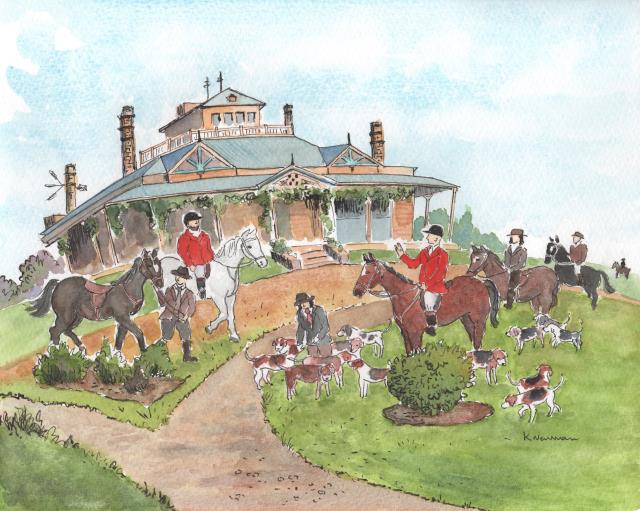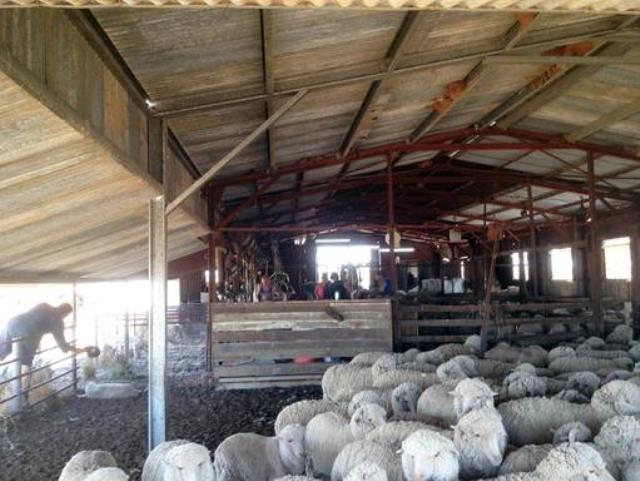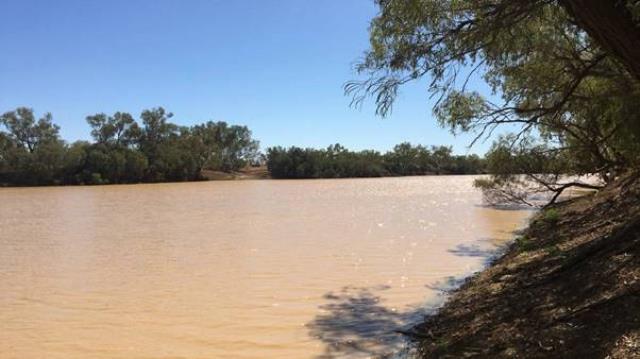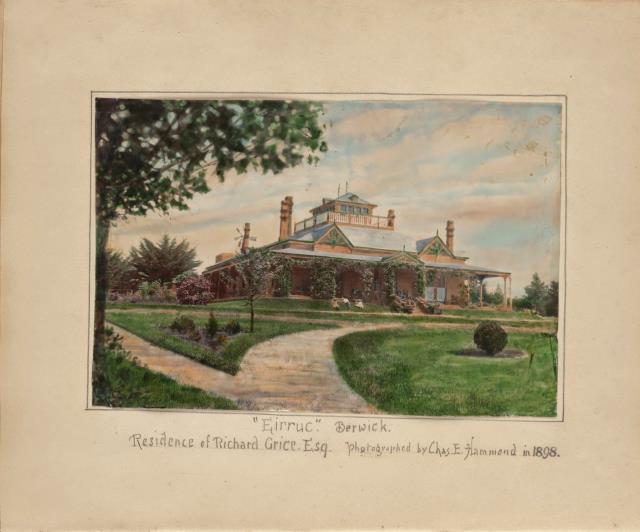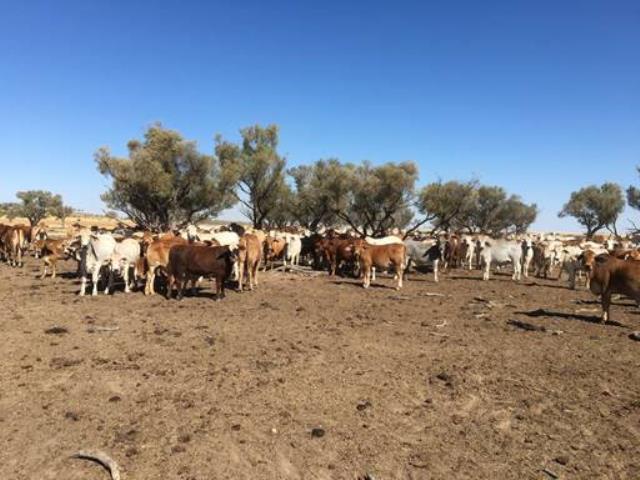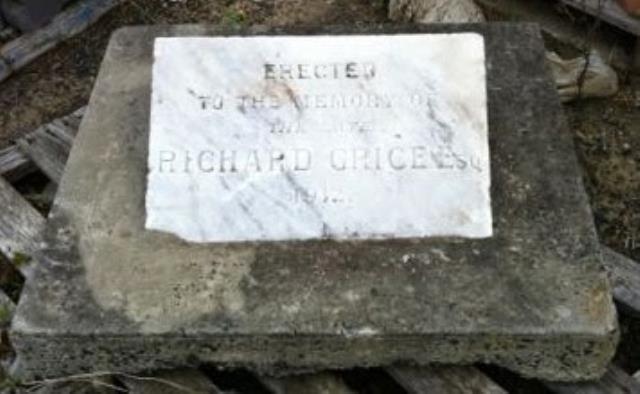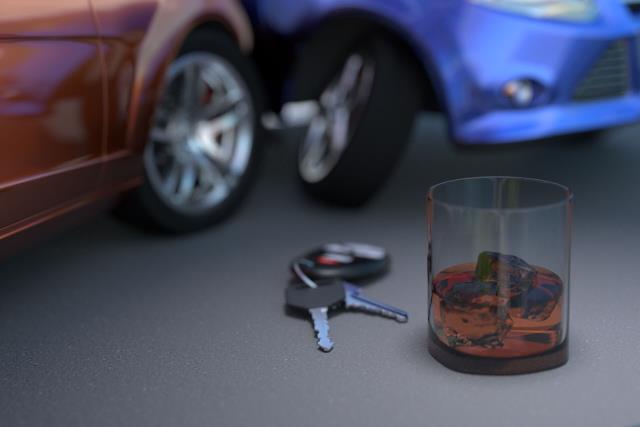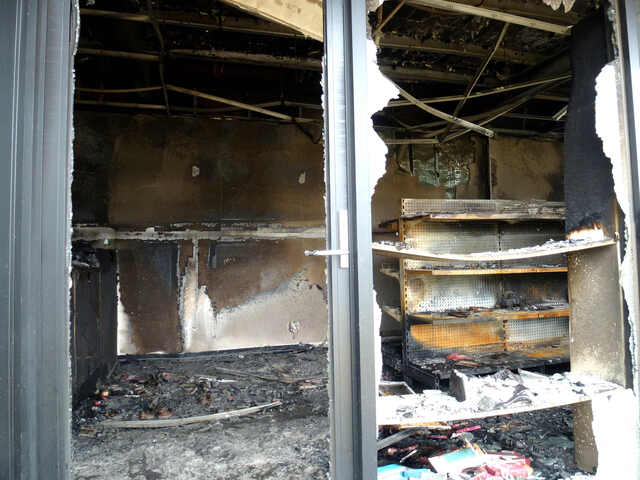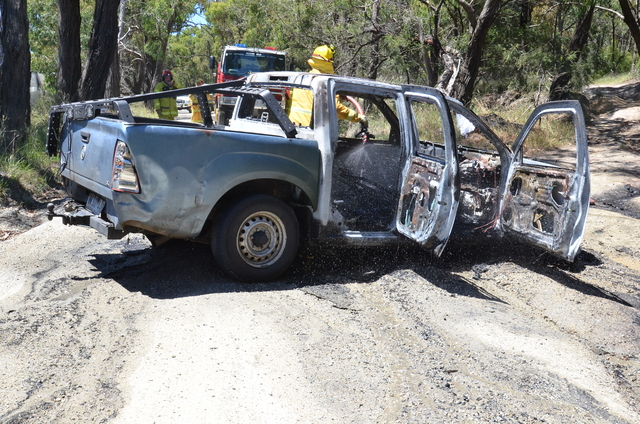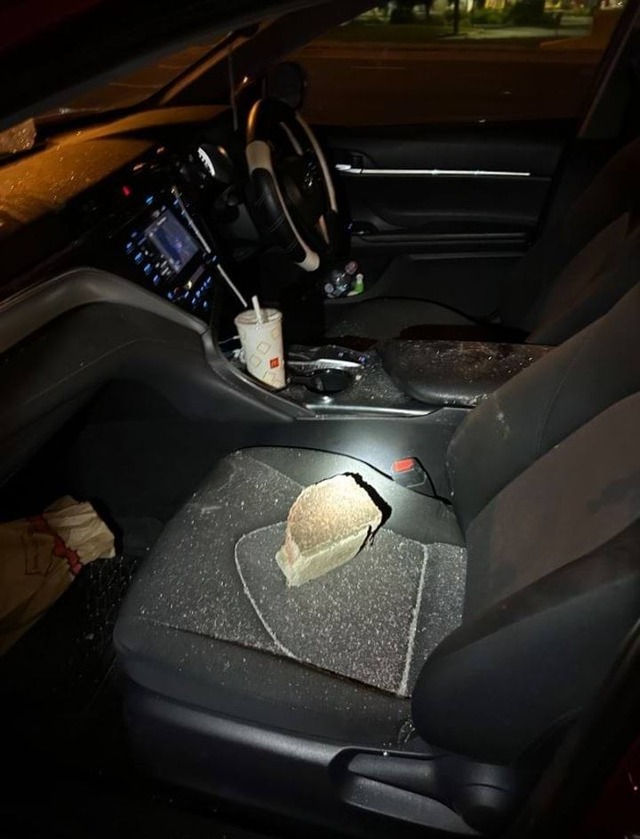The Grice family homestead, originally called Eirruc, still sits on a property on the south side of what is now known as Grice Road. Its owner Richard Grice was one of the first in the district to make use of the innovative disc plough,as NEIL LUCAS discovers in his latest look at the significance of place and street names in the region.
Grice Road, Berwick
The Alice Brooks sailed into Port Phillip in November 1839. During the six-month voyage, which commenced in Liverpool, England, two of the passengers, Richard Grice and Benjamin Heape, had formed a close friendship.
Under the command of Captain David Scott, the Alice Brooks was a 212 ton barque and called in at Adelaide, arriving on 23 September, prior to sailing to Port Phillip.
Richard Grice was born in England in 1813 and in the colony met another English-born lass Ann Lavinia Hibberson.
Ann was born in Derbyshire in August 1822 and had journeyed to Australia with her parents and siblings (Ann had seven brothers and four sisters).
Richard and Ann were married in Sydney just seven days before Ann’s 22nd birthday in 1844.
Richard Grice and Heape went into business together and the farming property Mt Alexander at Castlemaine proved to be a most successful venture.
However the benefits of life closer to Melbourne had the Grices move there, where they began a family.
William was their first born in Carlton in 1845 and they produced a total of 12 children, although sadly five did not survive to their 10th birthdays.
Richard established a new partnership with Theodotus Sumner (Lady Maie Casey’s grandfather) under the name Grice, Sumner and Co.
With ample supply of funds from his family in England, Grice’s mercantile company acquired and operated a number of pastoral properties in Victoria, New South Wales, South Australia and Queensland.
Richard and Ann’s surviving children were generally successful in their later lives. The three boys – James, John and Richard – each became quite well known in Melbourne circles.
James worked with the company established by his father for many years and had pastoral interests in the Wimmera. He also invested in an enterprise which mined phosphate in the Pacific Islands.
His great hobby however was thoroughbred racing and after joining the newly formed Victorian Amateur Turf Club as a founding member he went on to chair the club in 1888, in 1893, and from 1896 to 1906 inclusive. His horse Crysalite, which he owned with his brother Richard, won the Australian Hurdle in 1899.
John Grice, who was later knighted, was a leading figure in Melbourne’s financial and commercial life. After studying law at Melbourne University, John was admitted to the Victorian Bar, but did not practice, instead joining his father’s company.
Sir John was appointed to the committee of the Melbourne Hospital, which he subsequently chaired for 13 years, he was chairman of directors of the Metropolitan Gas Company, chairman of the National Bank and, following his appointment to the Council of Melbourne University in 1888, was appointed as the university’s Vice-Chancellor in 1918.
Sir John Grice was chairman of the Trustees Executors and Agency Co., Dunlop Rubber, and the Emu Bay Railway Co.
During the Great War Sir John Grice was the first honorary treasurer of the Victorian Branch of the Australian Red Cross Society.
Richard Grice, the youngest of the Grice boys who had survived childhood, was born in the family mansion in Victoria Street, Melbourne in 1858.
In 1884, at the age of 26, Richard married Louisa Currie, daughter of John Lang Currie, a Port Phillip pioneer and a most successful pastoralist in the Western District who was a well-known figure in the wool and frozen meat industries.
Curries’ Lustre Merino sheep were highly sought after.
In the same year as their marriage, the success of both their families led to the Grices purchasing 710 acres (260 acres) between Berwick and Cranbourne known as Mount John.
Just three years later they acquired a further 234 acres (86 hectares) in the Berwick District on the south side of what is now known as Grice Road.
They called this property “Eirruc” (Currie spealt backwards) and in 1887-88 they proceeded to build a substantial homestead on the highest point.
The homestead, which today remains on its original site, is of timber construction with a row of tall chimneys on either side of a central tower.
The Grices had a beautiful garden laid out and planted a number of fruit trees including apple and orange trees.
The homestead benefited from the shelter of a number of large eucalypts which had wisely been retained. A 33,000 gallon underground tank was constructed to provide domestic water storage.
With almost 1000 acres (370 hectares) to develop, Richard Grice appointed a farm manager, who was housed on the adjacent rise in the home of the previous owner.
There were areas of scrub and tea tree to clear and pastures to develop.
Grice was one of the first in the district to make use of the innovative disc plough.
The property was divided into 22 paddocks. The stables contained four stalls and two loose boxes and adjacent was a coach house and groom’s room. Nearby was a large cowshed which Grice converted into another stable, and a barn for the storage of hay and equipment.
Grice ran a range of animals on the property – a number of Clydesdales mares and a huge 16 hand 2 inches stallion King Roderick, numerous Shetland ponies including a mare imported from Scotland, an Arab stallion which he had imported standing 15 hands in height, cattle for fattening, dairy cows and Border Leicester sheep.
A 50 acre orchard was established with a number of varieties – Rokewood, Prince Alfred, Ribstone Pippin, London Pippin, Scarlet Nonpariel and Gott’s Seedling.
Many years later in 1910, the local paper reported that Richard had produced the largest apple ever in Victoria – a 26oz (0.737 kilogram) Prince Alfred, at that time just 1oz less than what was recorded as the world’s largest apple.
Richard was a keen supporter at local shows.
In 1885 the Mornington Farmers’ Society held their annual ploughing match on Richard’s Mount John Estate. Richard was an accredited judge and travelled to shows including the Tasmanian Show in 1903 to judge the light horse and hunter classes.
Richard Grice Senior’s properties in outback locations were of interest to the younger Richard and in particular Retreat Station located close to the headwaters of the Barcoo and Thompson Rivers in Queensland.
The Retreat Station covered a huge area (currently 142,600 hectares) and in the 1880s and ‘90s raised both sheep and cattle.
Richard continued to have a great interest in this business throughout his life. The station has the carrying capacity of 12,000 cattle including 10,000 sheep.
Like his brothers, Richard had a keen interest in thoroughbred racing.
The brothers acquired a horse Hova which they raced successfully, so successfully that Hova won the Newmarket Handicap in 1894, and in the following year qualified to run in the Melbourne Cup in which it ran second.
Coming around the last bend Hova looked a certainty but was beaten by the South Australian light-weighted mare, Acracia, by a neck.
Another success came a few years later when their Crysalite won the Australian Hurdle Race.
Richard joined the Victorian Racing Club in line with his interests in horse racing.
The Melbourne Hounds was another interest, and Richard held the position of Deputy Master for a number of years.
The Australasian in June 1902 records the conduct of a hunt from Dandenong through the paddocks along the Gippsland Road to Richard Grice’s property at Berwick:
“We journeyed by rail to Dandenong to hunt the country between that township and Berwick, at the invitation of Mr Richard Grice. A large and well-mounted field trained to the meet, and after the usual tightening of girths, trotted off along the Gippsland-road. After passing the Eumemmering state school (we) decided to draw Bourke’s paddocks, and were fortunate in finding almost immediately. Hounds went away through the above-named estate, taking on easterly line over some splendidly-grassed country, till crossing Hallam’s Road …… they entered Mr. Carrol’s grazing paddock, and carried the line thence into Mr Godfrey Watson’s property, The Pines.
…On leaving Mr. Watson’s, hounds ran through Mr Coxon’s, and swinging to the north crossed the Gippsland-road into Mr. Webb’s. Bearing to the north-east, we ran on across the old Narre Warren road into Mr. Kent’s, where hounds again ran out of scent. …. hounds took us over a thickly fenced piece of country through an orchard, swinging south through Mr Hillbrich’s, across the Gippsland Road into Mr Funston’s. Wheeling left-handed, they drove along at an increased pace through Messrs. Sweeney’s and W Wilson’s to the outskirts of Berwick township. Running through Mr Richardson’s, we crossed the railway into his property again, and emerged thence into Mr. Greave’s, where hounds again overran the line…. After a big circle in this property hounds ran across O’Shea’s road into the nunnery paddock, thence into Mr Grice’s… after a splendid run of one hour and 35 minutes.. We were then hospitably entertained by Mr and Mrs Grice at lunch at Eirruc, thus winding up a most enjoyable day’s sport.”
The Grices were well known in Melbourne circles for their philanthropy and hospitality.
In April 1908 Louisa Grice hosted an afternoon reception at Menzies Hotel in the City. Everyone well-known in Melbourne society was present.
The Australasian newspaper described the event thus:
“The winter-garden and its adjoining rooms had been-given over to the hostess, and, in addition to the abundant palm, and tropical growth with which the winter-garden is always adorned, there were tall white arches massed with amber and red dahlias and autumn foliage. Beneath one of these charming floral arrangements Mrs. Grice and her daughter, who has only just made her debut, received their friends. The hostess was most tasteful in her attire; her gown being of black and deep blue ribbed velvet, the bodice extremely pretty in front, and of white chiffon, worked with pale blue and silver, the diaphanous texture arranged in cascades, held by diamond brooches. Her deep blue hat had long black plumes at either side. Miss Grice was in-a girlish soft frock of pale, blue silk, and a picturesque white felt hat, on which were grouped deep red and purple silk and velvet-roses. Di Gilio’s string orchestra played in one of the alcoves of the garden, and there was a varied programme of music and recitation. Tea was served in the large room opposite the winter-garden.”
Richard also supported his local communities and provided financial support to various organisations including the Berwick Cricket Club and donations of books and periodicals to the Berwick Mechanics Institute Library.
He successfully stood for council and was a Shire of Cranbourne Councillor from 1894 until 1903 including a term as Shire President in 1898-99.
Richard and Louisa had three children – John Alan born 1885; Henrietta May born 1889 and Annie Elinor Julia born 1894.
In early 1906 Richard and Louisa decided to cease farming at Eirruc and began selling sections of their property.
The first section comprising the dairying enterprise was made available for sale in April that year.
The death of Louisa Grice in December 1908 at Eirruc hastened the sale of the remainder of the land, which Richard subdivided into farmlets of 40 up to 120 acres (15 to 44 hectares) and made available at an auction.
Richard retired to a three acre (approx. one hectare) property Wonalta in Berwick.
At the time of his death, as well as Wonalta, Richard also owned 66 acres (24 hectares) at Cranbourne, two blocks of land in Berwick Township and other assets valued at £4230.
Richard’s estate also included assets in NSW valued at £32,707 3s.
Following Richard Grice’s death in September 1911 the Berwick Town Improvement Association decided at a meeting in June 1912 to erect a stone tablet in High Street, Berwick in his honour.
The tablet remained in the upper section of the central reserve in Berwick until the late 1980s when it was removed in conjunction with the construction of the new public toilets.
Footnote – at some time after Eirruc was sold by Richard Grice (and certainly before 1923, a new owner renamed the property, now 100 acres (37 hectares), Eyre Court.

